Last Updated on February 2, 2023 by Dee
Wondering how to create the illusion of depth in art? Depth is one of the most important principles of good composition.
It’s hard to create a strong image that lacks any sense of depth or distance. Depth can be created in various ways, such as light and shadow, focus, overlapping elements, etc.
In this article, I will show how we can use a combination of techniques to give an illusion of depth on a flat, 2D surface. If you want to create a sense of realism in your artwork, it’s important to work on your depth in drawings.
What is Depth in Art?
(depth definition art)
Depth is the distance from an object to a viewer or focal point. This can be expressed in terms of spatial relationships between objects, atmospheric perspective, and fading into the distance.
It is important to consider what depth is like in artwork because it provides a sense of realism and order. It creates a visual journey from foreground to background, behind or in front of the subjects, near or far away. Depth helps to push our two-dimensional surface into a three-dimensional space.
Depth also gives us cues where we should be looking at first, next, and last within an artwork by using spatial relationships.
How do artists create depth on a flat surface?
Artists create a sense of depth and the illusion of space by using various methods developed by artists and scientists hundreds of years ago.
Leonardo Da Vinci was one of the founding fathers of using one-point perspective and looking at the proportions of the human figure. One point perspective also involves using one vanishing point on the horizon line.
Another fundamental way an artist can create the illusion of depth in art is through something called Aerial Perspective (or Atmospheric Perspective).
Aerial perspective includes a range of characteristics that give the illusion of depth. These include:
1. Diminished clarity and increased haziness of distant objects caused by thicker layers of atmosphere between an object and a viewer/camera lens.
2. Decreased sharpness or detail of objects at distance, because of atmospheric haze or dimming light (i.e., earth’s natural atmosphere)
3. Fainter color hues in the distance because of atmospheric scattering of light (blue sky, particles in air).
How to Create the Illusion of Depth in Art (Depth in art examples)
Let’s further explore some of how you can create the illusion of depth…
Overlapping of Shapes & Objects

Shapes and objects that are overlapped by other objects appear more distant from the viewer and help creating depth in a composition.
In the above image, the overlapped shapes appear more distant.
[Related Article: 121 Fun and Easy Objects to Draw]
Volume of Objects
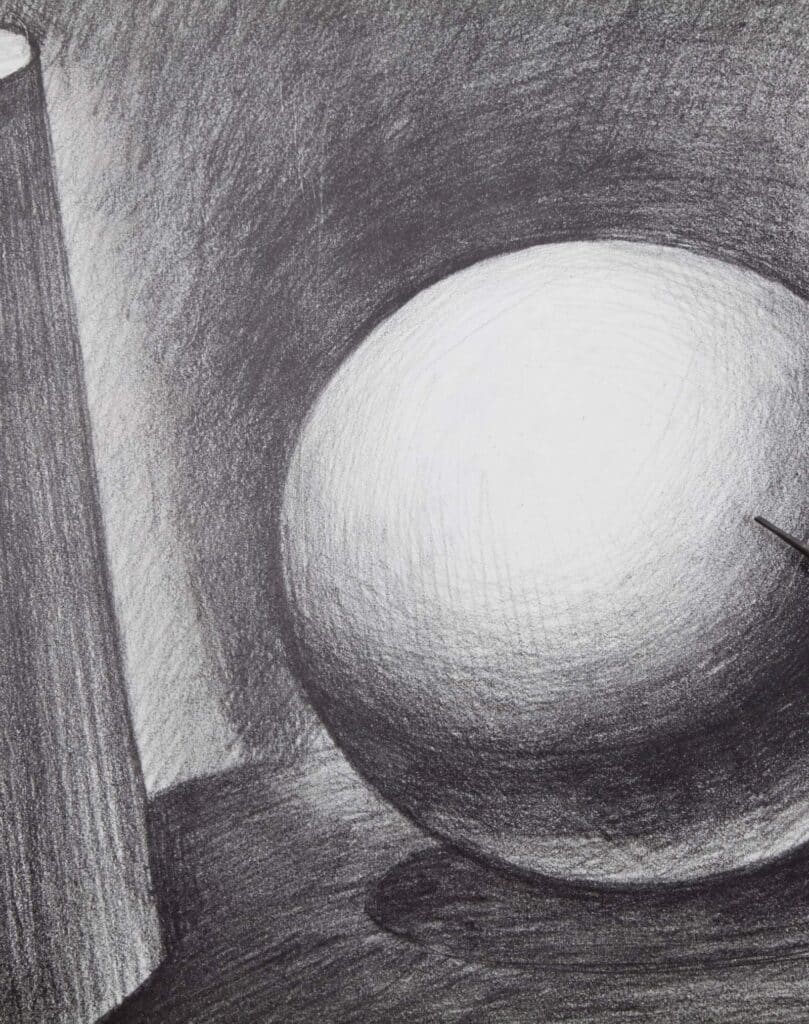
3D objects have volume. In this illusion of depth example, a sense of volume is created by adding shadows and highlights to an object. It’s important to observe where the light source is coming from because the object’s shadows will fall opposite the light source.
Saturation of Color

The further away an object is in distance, the less its color is saturated. Many cartoonists make the mistake of coloring objects equally at different distances. So make sure to make farther objects smaller and closer objects larger to create the illusion of depth.
By not changing an object’s color, it can appear closer than another less saturated object even though they are the same distance from the viewer.
[Related article: How to Draw a Background | 11 Easy Tips for Beginners]
Temperature

Color temperature refers to the warmth or coolness of an object’s color.
Warmth is created by adding more yellow to a color, while coolness is created with the addition of blue.
Foreground objects will be warmer than background objects because they are being lit by the light source.
Values
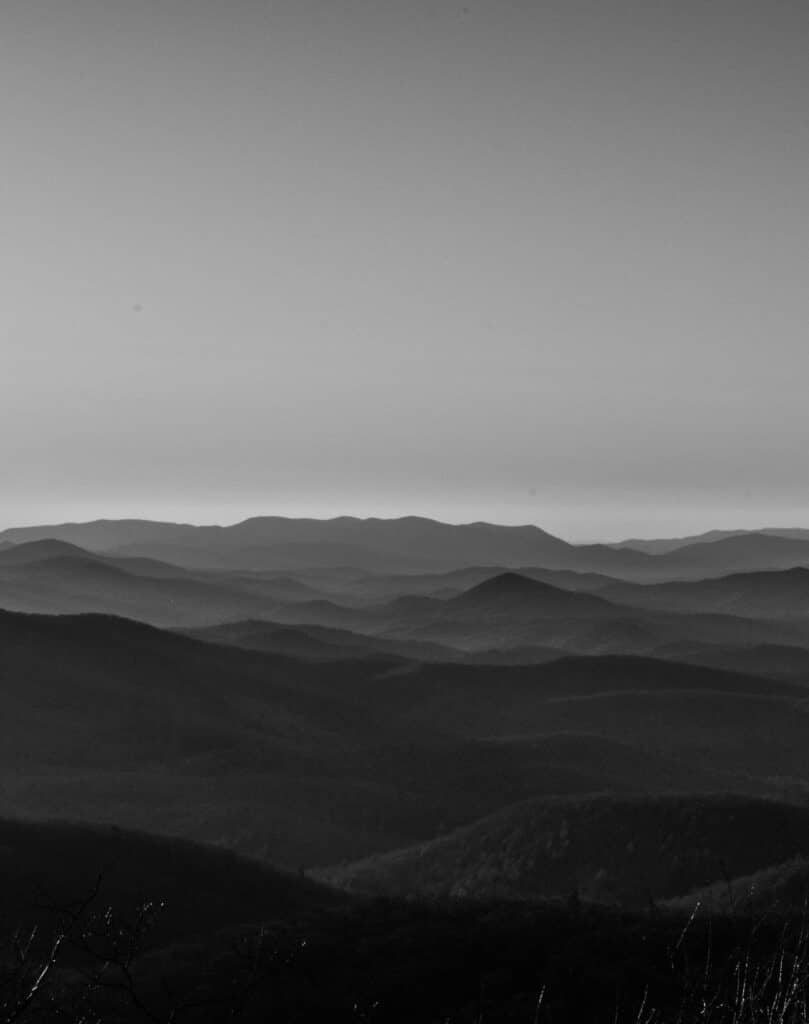
Values are the lightness and darkness of a color. You can add depth to your drawing by having different values in an object that is closer in the foreground than in an object further in the background.
Lighting on different parts of an object will also create different values. Shadows are always the darkest part of an object, while highlights receive the most light, and middle tones are lit with less brightness than shadows or highlights.
Depth is created by contrasting lightness and darkness in an image.
An easy way to remember all of this is that as objects recede into the background, they turn cooler in color and less saturated with less contrast. They become lighter and receive less light as well.
Foreshortening
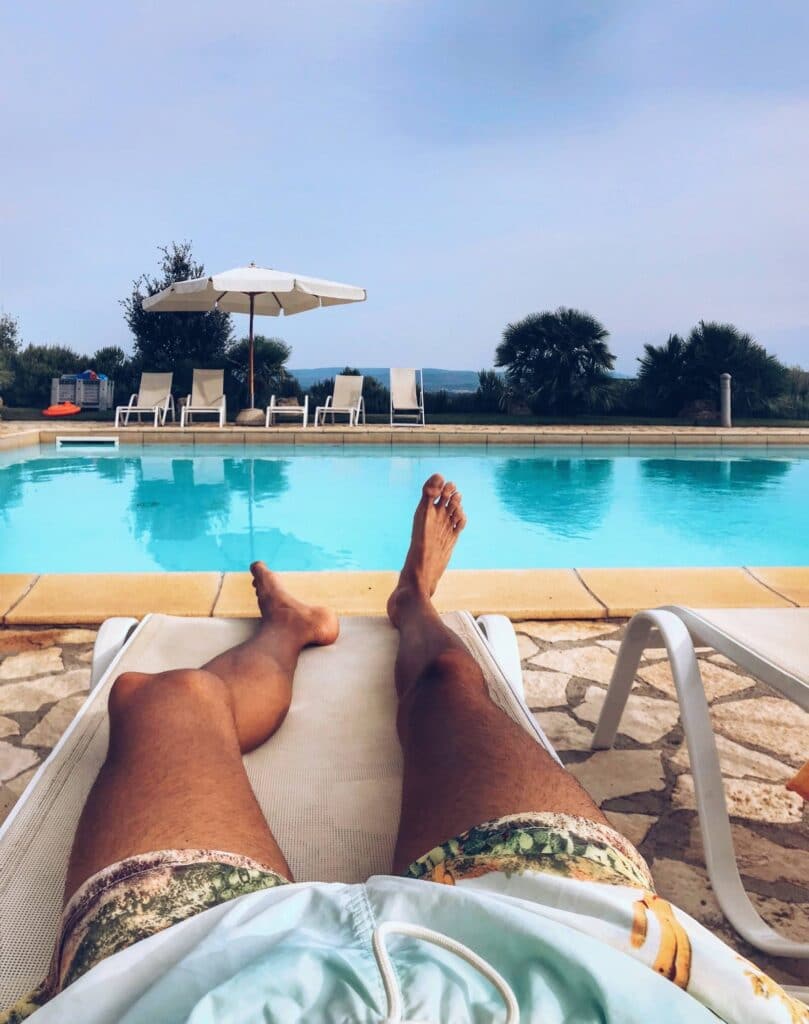
Foreshortening is the technique of depicting an object or figure in the artwork so to create the illusion of projection or extension in space.
We can show that an object is closer by making it appear distorted.
Two-point perspective

Two-point perspective is one of the three principal methods for depicting three-dimensional space on a (flat) surface.
The basic goal of this technique is to show two parallel lines that appear to converge as they recede into the distance, converging toward two vanishing points.
Two-point perspective gives us a sense of depth.
Here is a great video on how to draw 2 point perspective for beginners!
The height or the position of objects
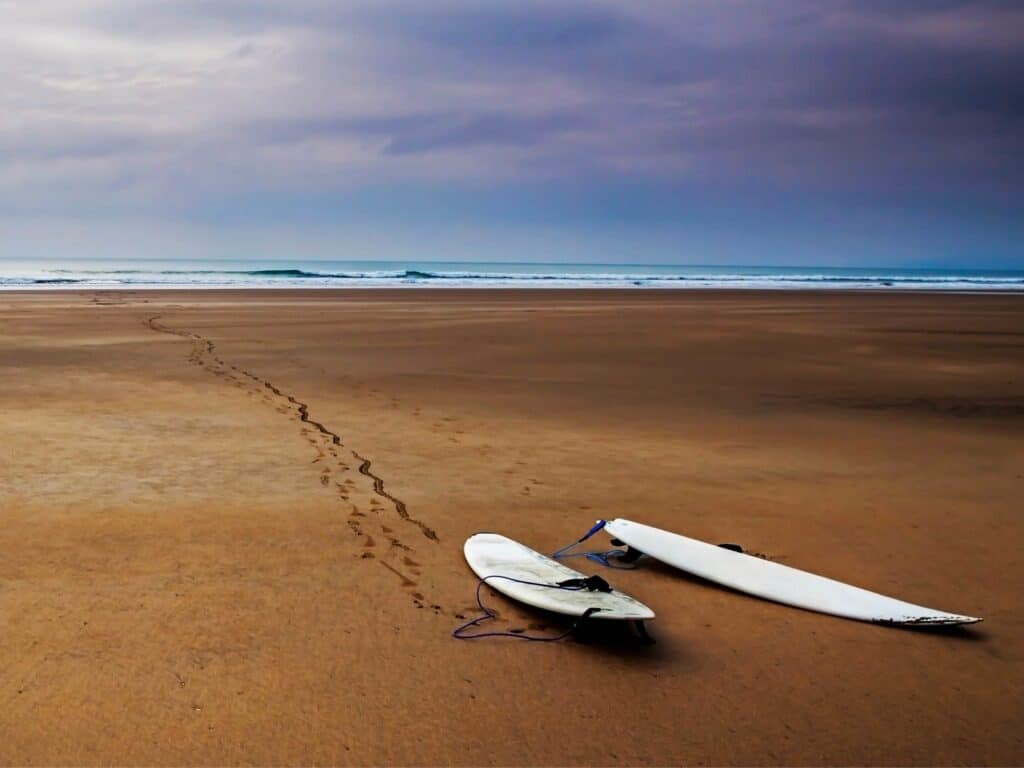
If you want to create the illusion of depth, drawing your object higher on the page will make it appear farther away.
One of the reasons for this is that we see objects higher on our visual field as further away than those lower. Drawing them lower will give the object more proximity, and, by extension, it will appear closer to the viewer.
Horizon

The horizon line is the line that determines the eye level of the observer.
The horizon line lies at eye level and often indicates depth in a landscape scene. If you want your scene to appear closer or farther away, manipulate where you draw the horizon line accordingly.
Tilting an object makes it appear further away because the viewer assumes that the
Size of Objects

Objects will appear smaller when they are further away in the distance.
As objects move further away from the viewer, they appear smaller.
If you want to create depth, draw closer objects larger than objects that are further back.
Edges of Shapes and Objects

The edges of any object in the foreground should be sharp and clear, as well as those objects that are closest to you.
As objects go further away from you, they begin to lose focus, and their edges appear blurry. The blurrier something is, the more distant it will seem.
So to create a sense of depth in your artworks, you should try to focus on creating crisp edges closer to you and blur those that are further away.
Comparison & Details of Objects

The details of objects should be more intricate, clearly defined, and patterned the closer they are to you.
As objects move into the distance, their details begin to fade away until they become nothing but a silhouette or an indistinct blobby shape.
As viewer, our eyes will always focus on what’s closest first because it’s easier for us to see much farther away.
So detail your foreground objects more than those in the background, and make them larger as well. This will give the illusion of depth to your artwork.
Cast Shadow on Objects

Cast shadows will always appear sharper and darker closer to the object that casts it.
As objects move further away from the object, they cast a blurrier shadow with less contrast.
So draw cast shadows darker and more defined on closer objects and a blurrier shadow in ones further away.

Frequently Asked Questions About Creating the Illusion of Depth in Art
What creates the illusion of depth?
The illusion of depth in art is created by our brain, which interprets objects according to their comparative size, position, and degree of detail that they possess.
Is perspective the illusion of depth?
Perspective is one of the ways to create depth in art, but it’s not the only way. You can also use a combination of the techniques above to achieve the illusion of depth in your artwork.
What is depth perception in photography?
Depth perception is the ability of an individual or machine to sense and comprehend the depth, and distance between objects.
What does illusion mean in art?
An illusion is defined as an erroneous perception of reality. In other words, it is a false interpretation of something or a misconception.
(depth art definition)
What is the system for creating the illusion of depth using the combination of horizon line vanishing points and convergence lines?
The system for creating the illusion of depth in artworks is called linear perspective.
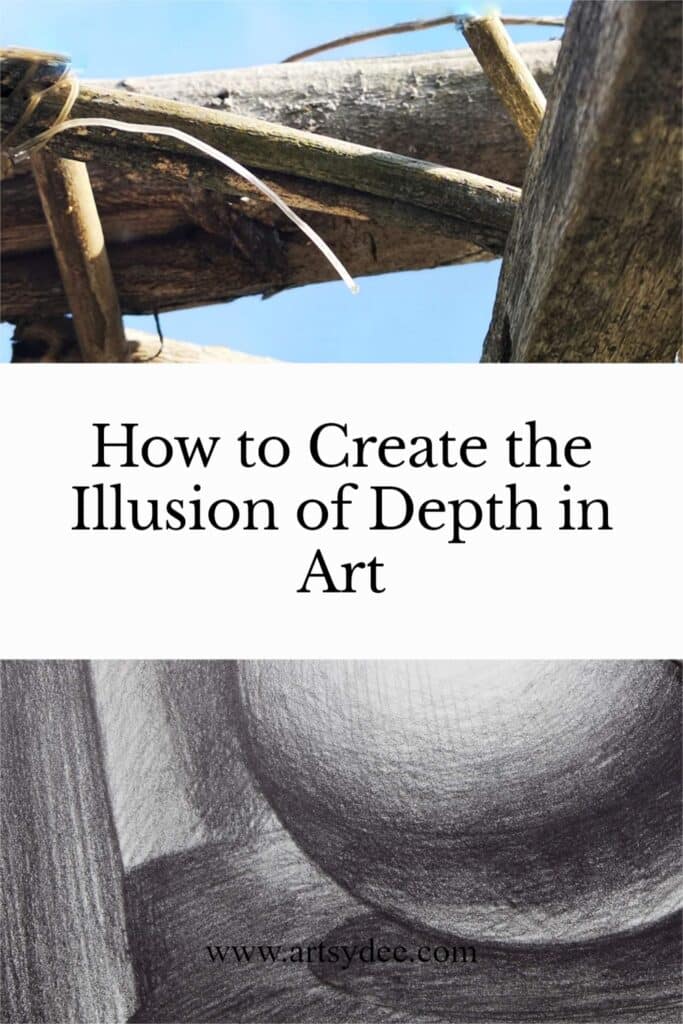
What are the components of linear perspective?
There are five components in linear perspective: 1) horizon line, 2) vanishing point, 3) vertical reference lines, 4) convergence lines and vertical lines, and 5) ground line.
What is aerial perspective?
Aerial perspective is the way that an artist can simulate how objects in a painting appear to fade or blur into the distance by using color.
It’s also called atmospheric perspective because it simulates an aerial view of colors and shapes, accomplished by laying darker colors on top of lighter ones. Darker colors are closer to the viewer, while lighter colors are farther away.

Conclusion
Knowing how to create the illusion of depth in art is important to creating visually appealing artwork. If you’re not entirely sure about what to do, you can reference the guide above whenever you need a refresher.
I hope you have found this post useful. Please share, comment, or ask any questions that you may have in the comment section below. Thanks for visiting!
Other Articles You May Enjoy…
[12 Easy Steps to an Accurate Side Profile Drawing]
[How to Get Ideas for Drawing!]
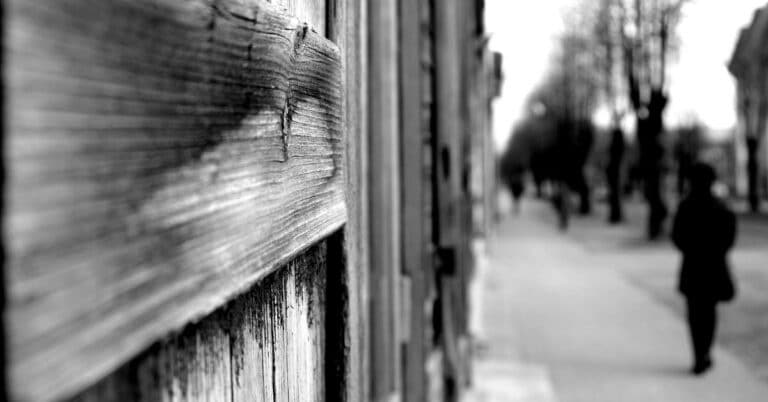
Loving reading your articals so informative and easy reading
Thank you Janet! I am glad you enjoy it 🙂